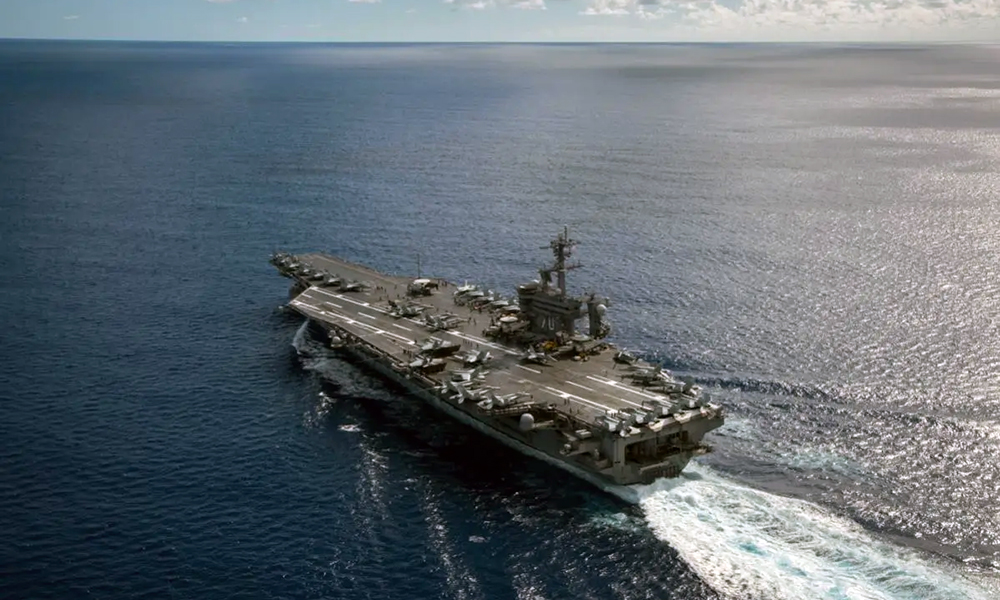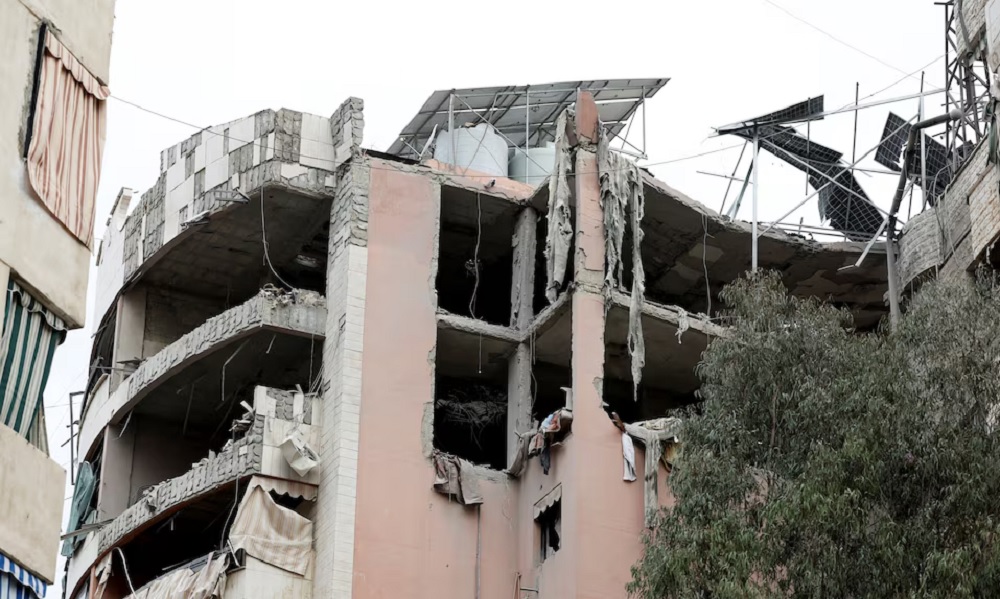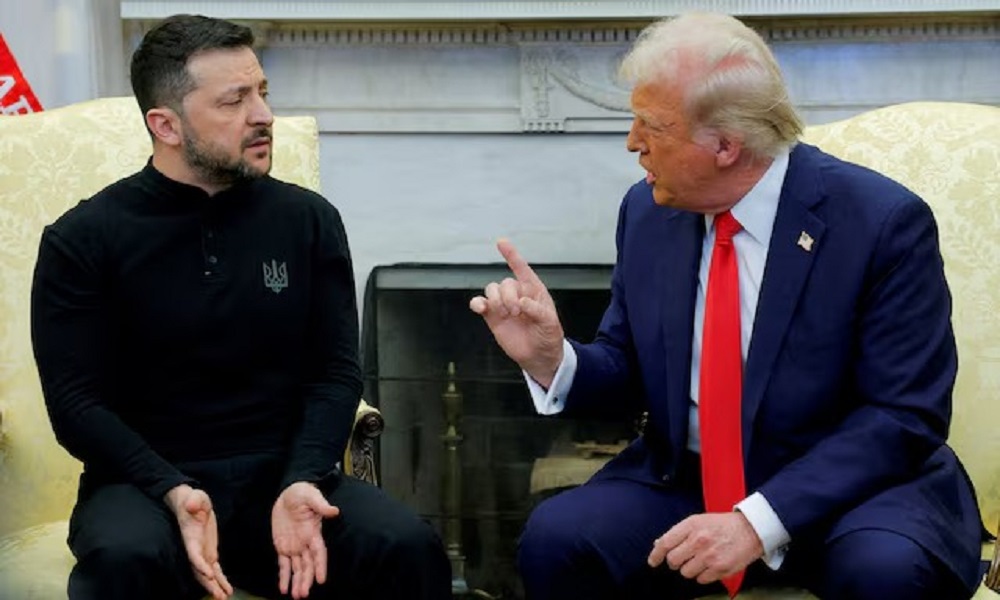World
Kuwait’s Emir Sheikh Nawaf dies, Sheikh Meshal named as successor

Kuwait’s Emir Sheikh Nawaf al-Ahmad al-Sabah died on Saturday, aged 86, according to the royal court, just over three years after assuming power in the U.S.-allied Gulf oil producer, Reuters reported.
The cause of his death was not immediately disclosed. The emir was admitted to hospital late last month due to what the state news agency described at the time as an emergency health problem but said that he was in a stable condition.
Crown Prince Sheikh Meshal al-Ahmad al-Sabah, 83, who has been Kuwait’s de facto ruler since 2021, when the frail emir handed over most of his duties, was named as Sheikh Nawaf’s successor.
Kuwait announced 40 days of mourning and a three day closure of official departments. World leaders paid tribute to Sheikh Nawaf and offered their condolences to his successor, Sheikh Meshal, the Al Sabah family and the people of Kuwait.
The Islamic Emirate of Afghanistan (IEA) also issued a message of condolence on the death of Sheikh Nawaf.
In a short statement, the IEA said: “It is with great sadness that we received the news that the Emir of Kuwait, Sheikh Nawaf Al-Ahmad Al-Jaber Al-Sabah, passed away.
“The Islamic Emirate of Afghanistan and the entire Afghan nation share this great grief with the people of Kuwait,” the statement read.
British Prime Minister Rishi Sunak said in a statement on social media platform X that he was saddened to hear of the passing of Sheikh Nawaf, who he described as a great friend of the United Kingdom that would be remembered fondly.
Emirati President Sheikh Mohamed bin Zayed wrote on X that Sheikh Nawaf had been a wise leader who played a major role in strengthening Kuwait-UAE relations.
Sheikh Nawaf became emir in September 2020 following the death of his brother, Sheikh Sabah, who had ruled for more than a decade and shaped the state’s foreign policy for over 50 years.
Sheikh Nawaf was seen by diplomats as a consensus builder even though his reign was marked by an intense standoff between the government and elected parliament, which had hindered key structural reforms in the oil rich Gulf state. In recent months, consensus returned between the government and the parliament.
Kuwait, holder of the world’s seventh-largest oil reserves, borders Saudi Arabia and Iraq, and lies across the Gulf from Iran. It was invaded and occupied by Iraq in 1990, sparking the first Gulf war several months later in 1991 when the United States and other nations defeated Iraq and liberated Kuwait.
Since he took over in 2020, Sheikh Nawaf maintained a foreign policy that balanced ties with those neighbours, whilst domestically eight governments were formed under his rule.
Under Kuwait’s constitution, the crown prince automatically becomes emir but assumes power only after taking an oath in parliament. The new emir has up to a year to name an heir.
Analysts and diplomats say that Sheikh Nawaf, and his crown prince Sheikh Meshal, both appeared to align Kuwait more closely with regional powerhouse Saudi Arabia.
The new emir’s choice of crown prince and premier – who would be tasked with managing the government’s often stormy relationship with parliament – will be watched closely as a younger generation of Kuwait’s ruling family jostles for position, Reuters reported.
Such factional struggles within the Al Sabah family have often played out in parliament as contenders for succession build their own political capital and domestic base.
Before handing over most of his constitutional duties to his designated heir, Sheikh Nawaf tried to secure a detente on the domestic political scene, including by issuing an amnesty pardoning dissidents that had been long-sought by opposition figures.
But the stalemate continued, leaving Sheikh Meshal to try to put an end to the political bickering this year by dissolving parliament and holding early elections in June.
Kuwait bans parliamentary parties but is still one of the region’s most politically liberal states, with a voluble political debate and the region’s most powerful elected legislative assembly that includes Sunnis, Shi’ites, liberals and Islamists, Reuters reported.
World
As Iran tensions build, US military moves warplanes to reinforce Middle East
U.S. President Donald Trump threatened Iran on Sunday with bombing and secondary tariffs if Tehran did not come to an agreement with Washington over its nuclear program.

U.S. Defense Secretary Pete Hegseth has reinforced U.S. military capability in the Middle East with more warplanes, the Pentagon said on Tuesday, amid a more than two-week-old U.S. bombing campaign in Yemen and mounting tensions with Iran, Reuters reported.
The Pentagon’s brief statement did not specify which aircraft were being deployed or where precisely they were sent.
However, as many as six B-2 bombers have relocated in the past week or so to a U.S.-British military base on the Indian Ocean island of Diego Garcia, according to U.S. officials, speaking on condition of anonymity.
Experts say that puts the B-2s, which have stealth technology and are equipped to carry the heaviest U.S. bombs and nuclear weapons, in an ideal position to operate in the Middle East.
“Should Iran or its proxies threaten American personnel and interests in the region, the United States will take decisive action to defend our people,” Pentagon spokesperson Sean Parnell said in a statement.
The U.S. military’s Strategic Command has declined to say how many B-2s have reached Diego Garcia and noted that it does not comment on exercises or operations involving the B-2.
There is already considerable firepower in the Middle East and the U.S. military will soon have two aircraft carriers in the region, read the report.
U.S. President Donald Trump threatened Iran on Sunday with bombing and secondary tariffs if Tehran did not come to an agreement with Washington over its nuclear program.
While B-2 bombers have been employed to strike buried Houthi targets in Yemen, most experts say use of the stealthy bomber is overkill there and the targets aren’t buried so deeply.
However, the B-2 is equipped to carry America’s most potent bomb — the 30,000-pound GBU-57 Massive Ordnance Penetrator. That is the weapon that experts say could be used to strike Iran’s nuclear program.
There are only 20 B-2 bombers in the Air Force’s inventory so they are usually used sparingly.
Iran’s Supreme Leader Ayatollah Ali Khamenei said on Monday the U.S. would receive a strong blow if Trump followed through with his threats.
Revolutionary Guards Aerospace Commander Amirali Hajizadeh threatened U.S. forces in the Middle East, noting American bases in the Middle East and adding: “They are in a glass house and should not throw stones.”
One official told Reuters that the U.S. military was also moving some air defense capabilities from Asia to the Middle East.
In his 2017-2021 term, Trump withdrew the U.S. from a 2015 deal between Iran and world powers that placed strict limits on Tehran’s disputed nuclear activities in exchange for sanctions relief. Trump also reimposed sweeping U.S. sanctions.
Since then, Iran has far surpassed that deal’s limits on uranium enrichment.
Western powers accuse Iran of having a clandestine agenda to develop nuclear weapons capability by enriching uranium to a high level of fissile purity, above what they say is justifiable for a civilian atomic energy program. Tehran says its nuclear program is wholly for civilian energy purposes.
World
Israel kills Hezbollah official in deadly Beirut airstrike

An Israeli airstrike killed four people including a Hezbollah official in Beirut’s southern suburbs on Tuesday, a Lebanese security source said, further testing a shaky ceasefire between Israel and Iran-backed Hezbollah.
The Israeli military said the official – Hassan Bdeir – was a member of a Hezbollah unit and Iran’s Quds Force, and he had assisted the Palestinian group Hamas in planning a “significant and imminent terror attack against Israeli civilians,” Reuters reported.
The Lebanese security source said the target was a Hezbollah figure whose responsibilities included the Palestinian file. The Lebanese health ministry said the strike killed four people – including a woman – and wounded seven others.
It marked Israel’s second airstrike in the Hezbollah-controlled suburb of Beirut in five days, adding to strains on the U.S.-brokered ceasefire that ended last year’s devastating conflict.
The attacks on Beirut’s southern suburbs have resumed at a time of broader escalation in the region, with Israel having restarted Gaza strikes after a two-month truce and the United States hitting the Iran-aligned Houthis of Yemen in a bid to get them to stop attacking Red Sea shipping.
Hezbollah lawmaker Ibrahim Moussawi said the Israeli attack amounted to “a major and severe aggression that has escalated the situation to an entirely different level”.
Speaking in a televised statement after visiting the building that was struck, he called on the Lebanese state to “activate the highest level of diplomacy to find solutions”.
Israeli Foreign Minister Gideon Saar said the eliminated Hezbollah operative posed “a real and immediate threat”. “We expect Lebanon to take action to uproot terrorist organizations acting within its borders against Israel,” he said.
Israel dealt severe blows to Hezbollah in the war, killing thousands of its fighters, destroying much of it arsenal and eliminating its top leadership including Hassan Nasrallah.
Hezbollah has denied any role in recent rocket attacks from Lebanon towards Israel, including one that prompted Israel to carry out an airstrike on the southern suburbs last Friday.
Tuesday’s strike in the early hours appeared to have damaged the upper three floors of a building, a Reuters reporter at the scene said, with the balconies of those floors blown out.
The glass on the floors below was intact, indicating a targeted strike. Ambulances were at the scene as families fled to other parts of Beirut.
There was no advance warning, in contrast to the attack on Friday when the Israeli military announced which building it intended to hit and ordered residents to leave the area.
Lebanese President Joseph Aoun condemned the latest airstrike, calling it a “dangerous warning” that signals premeditated intentions against Lebanon, which would intensify diplomatic outreach and mobilise international allies.
Lebanese Prime Minister Nawaf Salam said the strike was a flagrant breach of a U.N. Security Council Resolution upon which the ceasefire was based, and the ceasefire arrangement.
U.S. BACKS ISRAEL
The ceasefire agreement demanded that southern Lebanon be free of Hezbollah fighters and weapons, that Lebanese troops deploy into the area, and that Israeli troops withdraw.
But each side accuses the other of failing to implement the terms fully. Israel says Hezbollah still has infrastructure in the south, while Lebanon and Hezbollah say Israel is occupying Lebanese soil by not withdrawing from five hilltop positions.
The U.S. State Department said that Israel was defending itself from rocket attacks that came from Lebanon and that Washington blamed “terrorists” for the resumption of hostilities.
“Hostilities have resumed because terrorists launched rockets into Israel from Lebanon,” a State Department spokesperson said in an email, responding to a question from Reuters seeking reaction to Tuesday’s airstrike. Washington supported Israel’s response, the spokesperson said.
The Israel-Hezbollah conflict was ignited when Hezbollah opened fire in support of Hamas at the start of the Gaza war. It escalated in September when Israel went on the offensive, declaring the aim of securing the return home of tens of thousands of people evacuated from homes in the north.
The war uprooted more than a million people and killed at least 3,768 people in Lebanon, according to a Lebanese health ministry toll from November. Dozens more have been reported killed by Israeli fire since the ceasefire.
Lebanon’s figures do not distinguish between civilians and fighters.
During the war, Hezbollah strikes killed 45 civilians in northern Israel and the Israeli-occupied Golan Heights. At least 73 Israeli soldiers were killed in northern Israel, the Golan Heights, and in combat in southern Lebanon, according to Israeli authorities.
World
Trump says Zelenskiy wants to back out of critical minerals deal

U.S. President Donald Trump said on Sunday Ukrainian President Volodymyr Zelenskiy wants to back out of a critical minerals deal, warning the Ukrainian leader would face big problems if he did.
“He’s trying to back out of the rare earth deal and if he does that he’s got some problems, big, big problems,” Trump told reporters.
“He wants to be a member of NATO, but he’s never going to be a member of NATO. He understands that.”
(Reuters)
-

 International Sports5 days ago
International Sports5 days agoChennai grapple with IPL home truth after Bengaluru defeat
-

 Health5 days ago
Health5 days agoGlobal organizations warn of health crisis due to aid cuts in Afghanistan
-

 World4 days ago
World4 days agoMyanmar quake death toll hits 1,700 as aid scramble intensifies
-

 Sport4 days ago
Sport4 days agoIPL 2025: Gujarat Titans beat Mumbai Indians by 36 runs
-

 Latest News3 days ago
Latest News3 days agoSwitzerland re-establishes presence in Kabul with humanitarian office
-

 Latest News3 days ago
Latest News3 days agoPakistan plans to expel 3 million Afghan refugees this year
-

 World3 days ago
World3 days agoSouth Korea, China, Japan seek regional trade amid Trump tariffs
-

 Regional3 days ago
Regional3 days agoIran’s Khamenei warns of ‘strong’ response if US attacks























